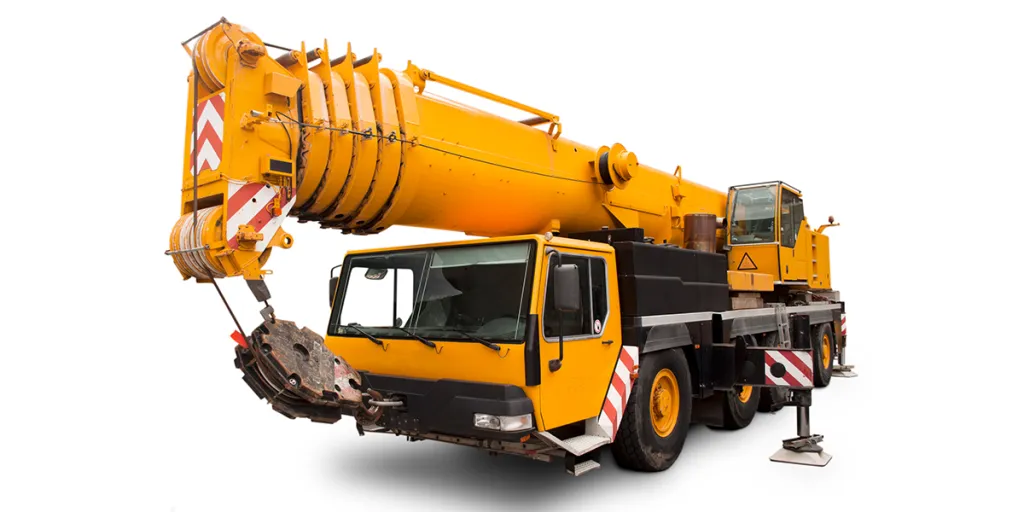If you are in the market for a mobile crane, then the boom truck, or truck crane, is a strong option to consider. There are a wide range of options on the market, from small 4-wheel light trucks, to 10 or 12-wheeled giants.
This article looks at the basics of a boom truck, offers comparisons to other types of mobile cranes, and looks at a selection of boom trucks available online.
Table of Contents
The global market for boom trucks
What are boom trucks?
A comparison with other types of mobile cranes
A wide selection of boom trucks to consider
Final thoughts
The global market for boom trucks
Post-pandemic, the construction industry has seen a significant bounce back and is undergoing a healthy growth period. As a result, construction equipment is also seeing increased growth, with boom trucks being a part of that growth especially in load capacities above the 20 ton range.
The global boom truck market has increased pace and is now projected to grow at a compound annual growth rate (CAGR) of around 7.7% from a 2023 value of USD 1.6 billion to a value of USD 4 Billion by 2036.
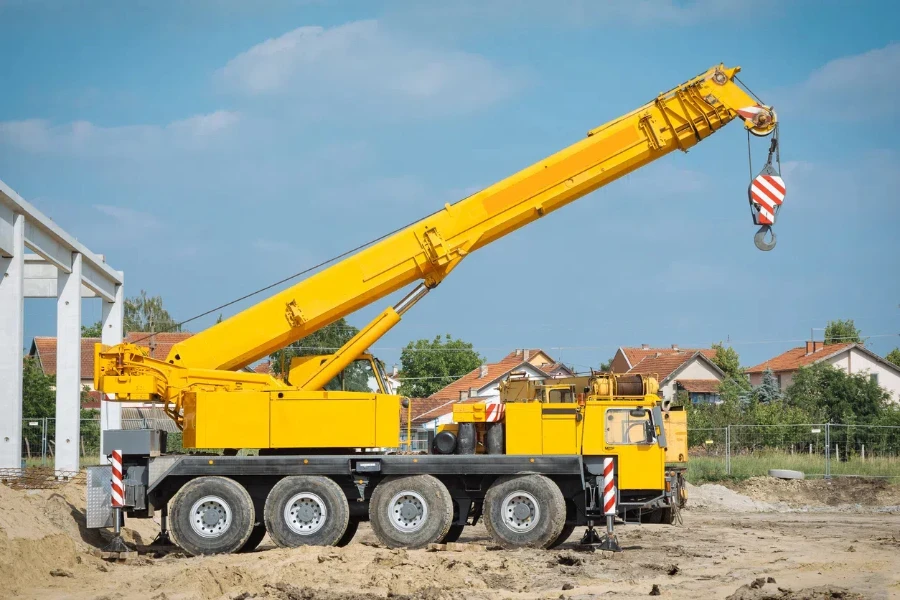
What are boom trucks?
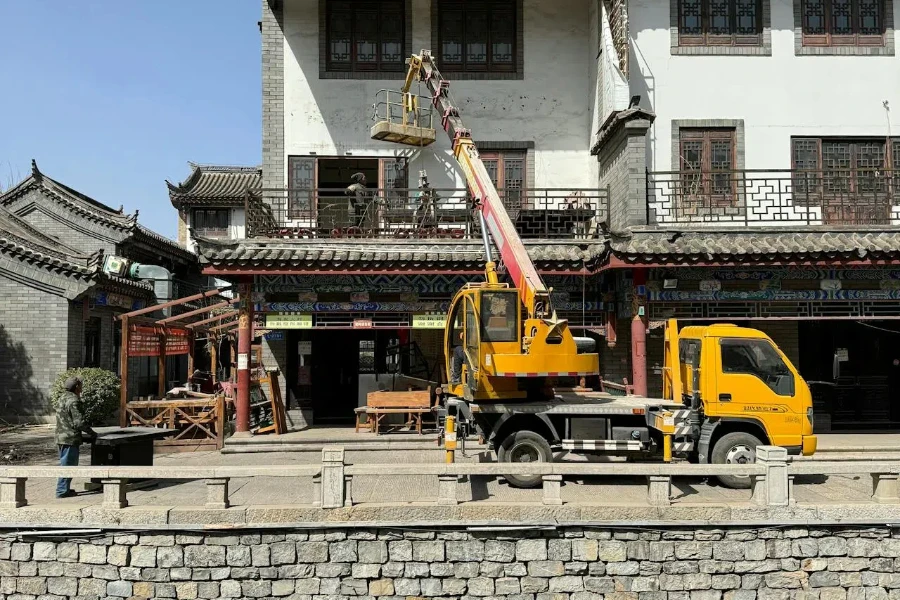
In simple terms, a boom truck is a truck chassis with a hydraulic crane boom fitted to the truck bed. The truck base gives the crane the mobility of a truck, and boom trucks are therefore also called mobile cranes. Boom trucks are also known as truck cranes and truck-mounted cranes (TMCs). They are also sometimes called HIABs, which is an historic proprietary name that has now become rather a common term for boom trucks.
Boom trucks can be found in a range of sizes, from small flatbed trucks to huge multi-wheeled transporters. The crane boom is an hydraulically extendable box-type crane arm. The arm may be fitted directly to the truck bed and moved by the driver from the driver cab, or may sit on a rotating crane base that can be operated from a crane cabin.
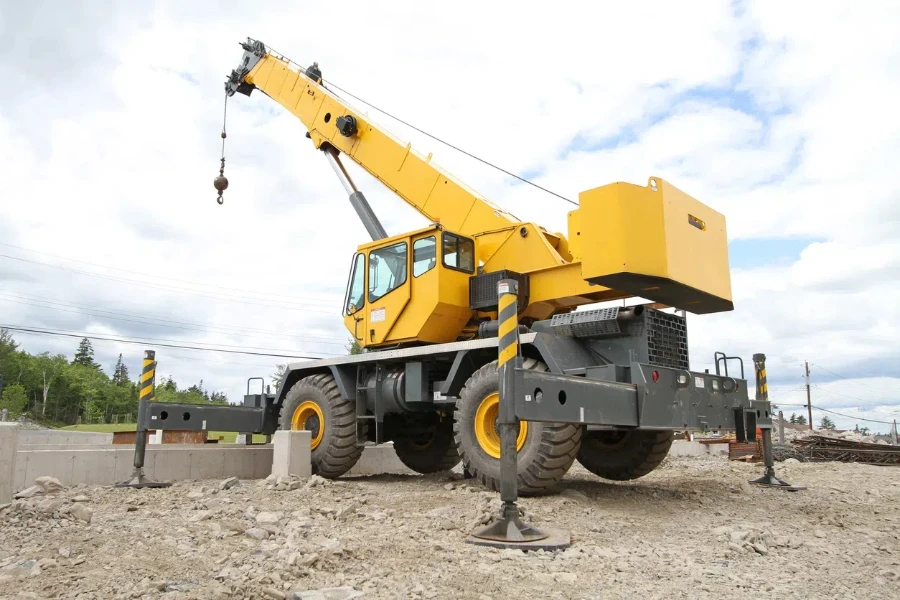
Boom trucks are usually categorized by their lifting capacity rather than the truck chassis size, although a buyer would be interested not only in lifting capacity, but also truck size, and therefore site accessibility. Smaller cranes can have a lifting capacity of up to 5 tons, whereas the larger boom trucks can lift 1200 tons or more.
The boom itself is retracted for transport, and once on site the boom is extended up to its full length. Most boom arms can also fit an additional lattice jib to provide further reach. When on site and ready for use, the truck will extend its outriggers for full stability. A consideration then is whether the site access is big enough to fit the truck, and also wide enough to allow the outriggers full extension.
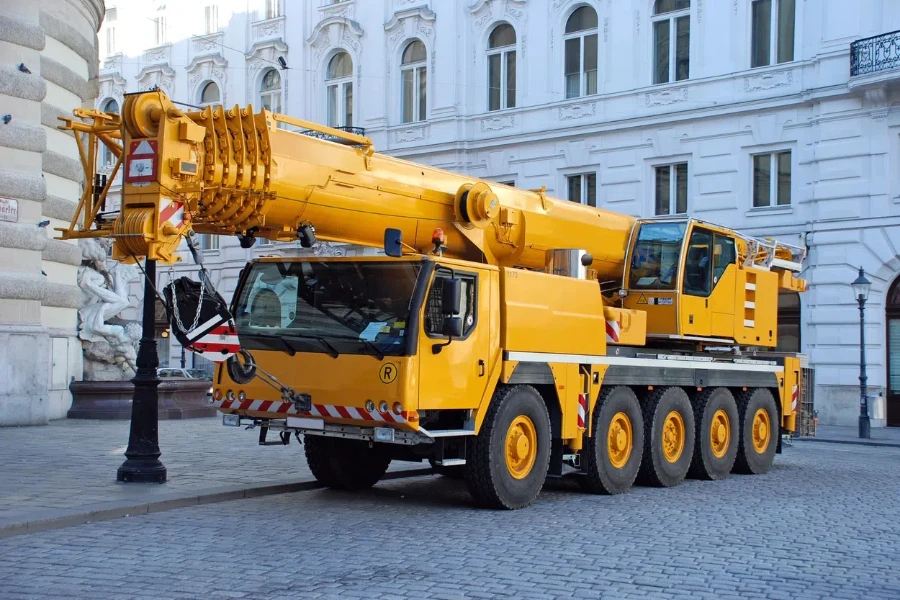
The boom can rotate on the truck bed by 360 degrees to access all directions. On small trucks, this is a simple rotating bed under the main boom, and is either operated manually with controls near the boom, or from the truck cabin.
For larger boom trucks, typically upwards of 5 tons, the boom sits on a slewing platform that rotates 360 degrees. The slewing platform holds a separate operating cabin, so that the crane is controlled from the base of the boom.
A comparison with other types of mobile cranes
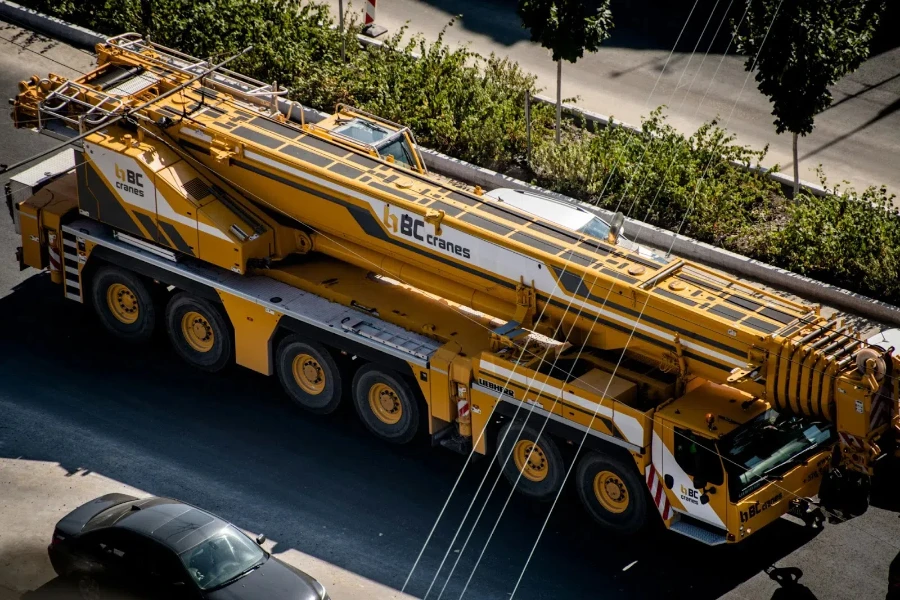
Boom trucks are highly mobile, moving fast and easily on their truck chassis, on construction site roads as well as on public roads. Once on site, their outrigger stabilizers extend quickly, giving a very stable platform, and the crane is ready to go. Boom truck cranes can lift heavy weights, up to over 1,000 tons for the bigger models. Their extending boom can reach heights upwards of 260 feet, or more with the addition of a lattice jib.
However, mobile cranes, i.e. cranes that can move, come in a variety of types and capabilities, each with their own strengths and weaknesses. For a brief comparison, here are some of the characteristics of some of the other main types of mobile crane:
Spider cranes: Spider cranes have four extendable outrigger legs that, once extended, make them look a little like spiders, hence the name. They occupy a small footprint, so they are a good choice for limited access sites. Like boom trucks, they have a boom crane that extends. Once folded, they can move around on a small crawler track under their own power. Spider cranes come with a range of lifting capacities, up to around 12 tons in weight, and a 50 feet height.
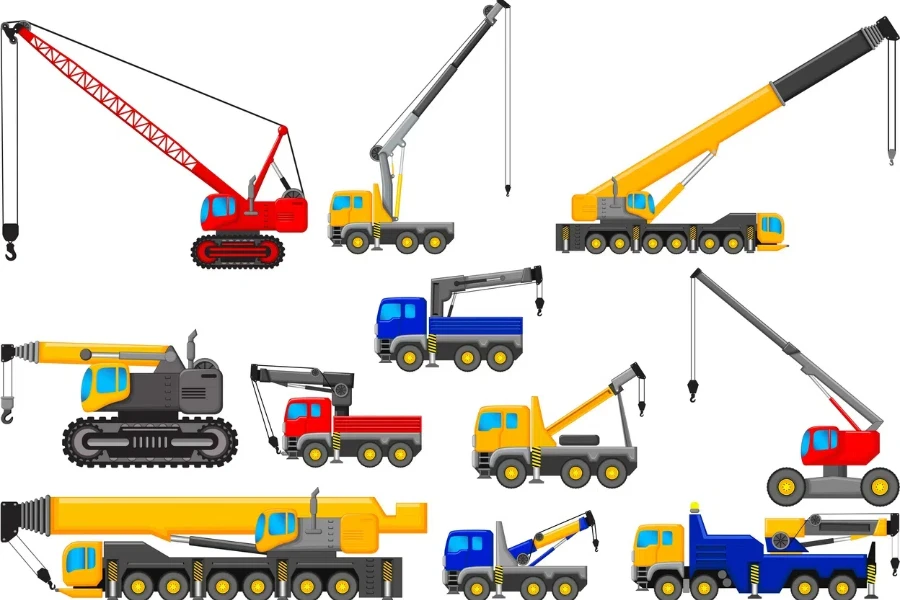
Crawler cranes: As their name implies, these move slowly on crawler tracks, but are not roadworthy. Their lattice booms require some assembly, with heavy counterweights added for stability. Once assembled, they can lift upwards of 3,000 tons and to heights of around 650 feet.
Bridge cranes: Also known as overhead cranes, these types are fitted within an industrial environment such as a factory or warehouse. A single traveling girder moves on two parallel girder rails on either side of the space. These cranes can lift 100 tons or more up to the height determined by the parallel beams. They are not truly mobile as they can only move along their track.
Self erecting cranes: These cranes fold and unfold, and are towed rather than move under their own power. Once positioned on site, they erect quickly over a small footprint, and are quite well suited to small construction sites. They have a lifting capacity in the 3–4 ton range, with a few larger ones that can lift up to around 10 tons, to between 60 and 130 feet.
Boom trucks: When comparing boom trucks to other types of cranes, boom cranes offer several advantages. They are mobile, able to retract or extend their boom quickly, and they can move swiftly from one job to another. Other mobile cranes are limited by their time to assemble or disassemble, or can only move slowly or with assistance.
A wide selection of boom trucks to consider
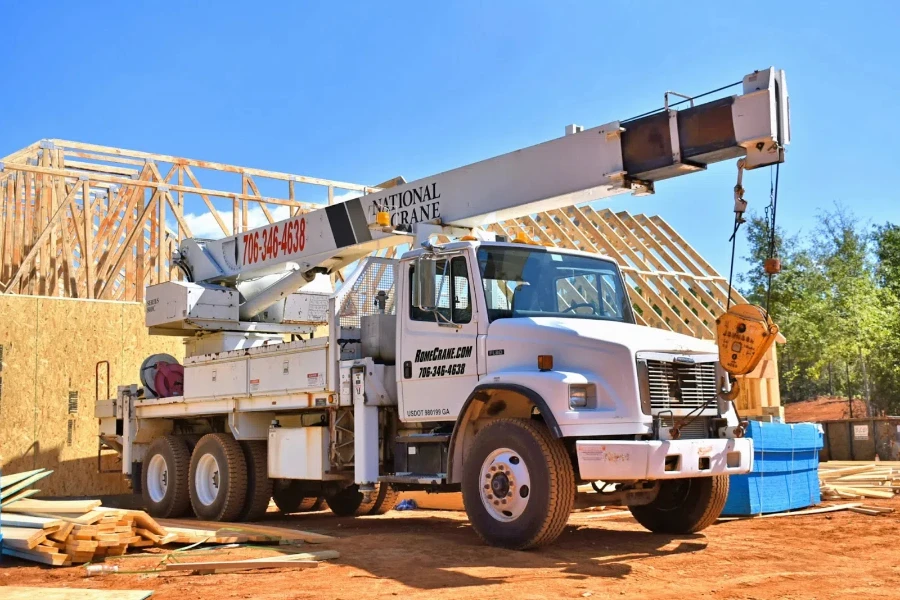
Truck cranes are typically classified by their lifting capacity, in tons, although their maximum height and span are also considerations. This section offers a selection of trucks across four weight categories, with further information as provided by the supplier:
- light-duty (up to 5 tons)
- medium-duty (5-15 tons)
- heavy-duty (16-50 tons)
- extra-heavy-duty (upwards of 50 tons)
Light duty (up to 5 tons)
| Model | Rated lifting movement | Lift capacity | Lift height | Span | Price (USD) |
|---|---|---|---|---|---|
| SQ4SK3Q | 10ton.m | 4 ton | 9m | 8.5m | 4,000 |
| JIUBANG | NA | 4 ton | 11.2m | NA | 22,500 |
| SITONG | 15.75ton.m | 5 ton | 15m | 5.3m | 4,500 |
| Dongfeng | NA | 5 ton | 28m | 49m | 20,000 |
Medium duty (5-15 tons)
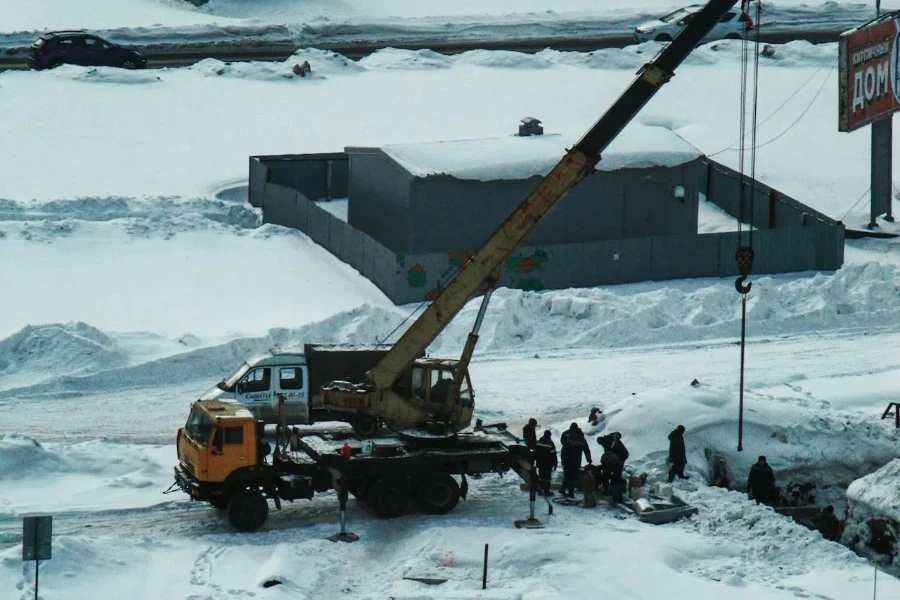
| Model | Rated lifting movement | Lift capacity | Lift height | Span | Price (USD) |
|---|---|---|---|---|---|
| HY8S5 | 20ton.m | 8 ton | 18.6m | 5.7m | 17,290 |
| SPK8500 | 75kN.m | 10 ton | 9.8m | NA | 18,500 |
| STC120T5 | 573kN*m | 12 ton | 35m | NA | 240,000 |
| SINOTRUCK | 573kN.m | 15 ton | 20.5m | 3m | 5,000 |
Heavy duty (16-50 ton)
| Model | Rated lifting movement | Lift capacity | Lift height | Span | Price (USD) |
| ZTC160E451 | 715kN.m | 16 ton | 33m | NA | 50,000 |
| ZTC250 | 980kN.m | 25 ton | 50m | 6.9m | 85,000 |
| SPC320 | 4145kN.m | 32 ton | 41.5m | 27.5m | 88,000 |
| QY50K5C | 1985kN.m | 50 ton | 46.4m | 7.9m | 78,900 |
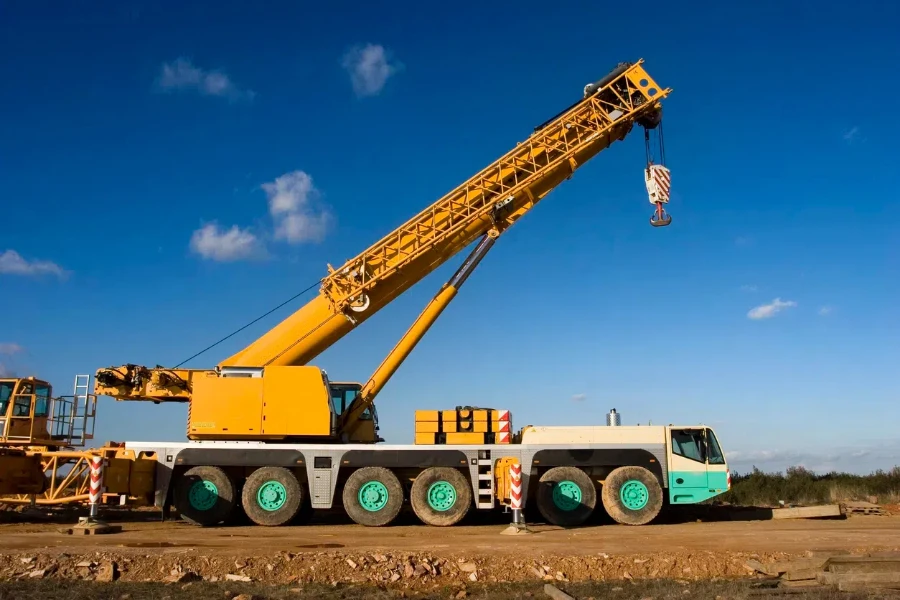
Extra heavy duty (upwards of 50 tons)
| Model | Rated lifting movement | Lift capacity | Lift height | Span | Price (USD) |
|---|---|---|---|---|---|
| ZTC700V | 2352kN.m | 70 ton | 60.2m | NA | 117,900 |
| ZTC1500V | 4707kN.m | 150 ton | 98.5m | NA | 295,600 |
| STC2000C8-8 | 5880 kN*m | 200 ton | 120m | 8.3m | 152,000 |
| STC2400C8-8 | 7188.3 kN*m | 240 ton | 120.5m | 8.3m | 75,000 |
Final thoughts
These days there are a wide selection of boom trucks available, from the smaller sized 5-10 ton models up to the very heavy duty boom trucks of over 1000 tons. The prospective buyer will want to be clear on the lift capacity, as well as the maximum height and span of the boom, and of the size and accessibility for the truck chassis.
Smaller truck beds will be light and mobile and will have easy access to smaller work sites, but will not have the lift capacity of larger cranes. Operation is likely to be with manual controls at the base of the boom, or operated from the truck cab.
For larger boom trucks, lift capacity can be huge, and the boom will be operated by a dedicated crane cabin fitted on the boom turntable. Heavy duty trucks come with multi-wheeled chassis of 10, 12 or more wheels. Access for these large trucks will be much more limited and they are unlikely to be suitable for small and tight construction sites.
For more information on the wide choices of used truck cranes available, check out the Alibaba.com showroom.
